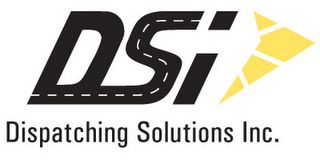Thursday, May 05, 2005
Article - How to stop the cash hemmorhaging from transporting rental equipment
THE SILENT KILLER: How Transport Is Killing Your Rental Profits
Scenario: Rental revenue is up substantially but the P&L is suffering from escalating equipment transport costs. Quantity of rents and number of hauls likely went up last year at a similar pace. Inefficient transport and poor sub hauler management are pushing the profit pendulum into the red. Counter personnel and management view equipment transport as one of the most important bargaining chips in the salesperson’s arsenal. “Give transport away if you have to,” is the daily battle cry.
The company should expect a loss in this category right? Wrong. A company mind shift toward breakeven transportation will tilt your P&L in right direction.
Most equipment rental operations face the following every day:
Company owned vehicles cross empty.
A sub hauler is utilized to carry a small piece of equipment on a 5-axle rig across town.
Equipment is dropped at the nearest rental store location versus the location that may need that piece tomorrow at 7AM.
Many of the moves between 5 and 7 A.M. are intra-store transfers.
On-time deliveries are infrequent and are the source of customer complaints.
Dispatching and tracking are done via a complex system of white boards, paperwork, and cell phones.
Old habits are hard to break and booming growth has forced efficiency and productivity studies to the back burner. Following are some suggestions on how to bring this issue into focus during 2005 without breaking the bank.
Transport Cost/Process Analysis & Improvement
This is a great first step toward recovery. A few days of analysis (preferably by someone outside the organization to avoid company politics and bias) will lay a foundation for your ultimate solution. Here you will find your true costs of internal versus external hauling. If you don’t have the funds right now to invest in new systems, this process can go a long way toward stemming the flow of red ink. Many times, reduction of paper and simple stopgap measures can provide fast return on investment.
The Right People in the Right Places
Today’s dispatcher is more than a cell phone wielding master of logistics. Today she must understand technology and how it can be used as a tool to massively increase productivity. She must also lead and coach drivers to stay the course when systems show their weakness (time for a server reboot and re-enter your status on the in-truck data terminal). If you don’t have a transportation manager with keen business sense, hire one now.
Centralized Dispatch
Besides obvious geographic challenges that would preclude organizations from totally centralizing dispatch, this writer’s experience has shown that centralization is key to maximizing dispatch efficiency. Culturally, this issue can be a major bone of contention between divisions and business units. The loss of “Dispatching Power” can be a tough pill to swallow. Picking up the phone and arranging one’s own moves provides a certain sense of security. However, a team of professionals with the proper tools is key to gaining the 360-degree fleet view that leads to less empty miles and proper truck-trailer utilization.
Software System and GPS Fleet Tracking
By far, one of the most powerful additions to the fleet management suite is a dispatch and GPS tracking solution. However, just adding a GPS system to your paper/phone dispatch is not enough. Your company will absolutely see the basic GPS benefits like overtime reduction, fleet position awareness, and reporting. In fact, this alone will likely provide the return on investment you seek. To truly become efficient, the dispatch system (where your fleet should be going) must be fully integrated with the GPS system (where your fleet actually is). By marrying these two data sets, a new level of operational excellence will evolve.
Active Sub-Hauler Management
Is most or all of your sub-haul business going to the same few companies? If you remain loyal based on quality of service, on-time delivery, and reliability there’s not a lot of incentive to change. But when you’re known as “Money in the bank,” prices tend to remain the same in spite of the competition. Keep your haulers honest by employing some method of business review at quarterly intervals. Ask for loyalty or volume discounts. If you have hauls that can be put out to bid, employ a load matching service (Preferably one integrated into your Dispatch System) At the very least, you’ll discover new haulers or find an aggressive upstart that may become your next “Go To” hauler.
Total Company Buy In
Possible the most difficult corporate achievement, total corporate buy in is a requirement for these improvements to take hold and become part of your company’s culture. This is especially true of change and improvement to transportation. Drivers and dispatchers alike can inadvertently sabotage a campaign by continuing to operate the status quo or launching a quasi smear campaign against a newly deployed system. Drive the success of transport efficiency by having champions of your solution at all levels of the company.
Scenario: Rental revenue is up substantially but the P&L is suffering from escalating equipment transport costs. Quantity of rents and number of hauls likely went up last year at a similar pace. Inefficient transport and poor sub hauler management are pushing the profit pendulum into the red. Counter personnel and management view equipment transport as one of the most important bargaining chips in the salesperson’s arsenal. “Give transport away if you have to,” is the daily battle cry.
The company should expect a loss in this category right? Wrong. A company mind shift toward breakeven transportation will tilt your P&L in right direction.
Most equipment rental operations face the following every day:
Company owned vehicles cross empty.
A sub hauler is utilized to carry a small piece of equipment on a 5-axle rig across town.
Equipment is dropped at the nearest rental store location versus the location that may need that piece tomorrow at 7AM.
Many of the moves between 5 and 7 A.M. are intra-store transfers.
On-time deliveries are infrequent and are the source of customer complaints.
Dispatching and tracking are done via a complex system of white boards, paperwork, and cell phones.
Old habits are hard to break and booming growth has forced efficiency and productivity studies to the back burner. Following are some suggestions on how to bring this issue into focus during 2005 without breaking the bank.
Transport Cost/Process Analysis & Improvement
This is a great first step toward recovery. A few days of analysis (preferably by someone outside the organization to avoid company politics and bias) will lay a foundation for your ultimate solution. Here you will find your true costs of internal versus external hauling. If you don’t have the funds right now to invest in new systems, this process can go a long way toward stemming the flow of red ink. Many times, reduction of paper and simple stopgap measures can provide fast return on investment.
The Right People in the Right Places
Today’s dispatcher is more than a cell phone wielding master of logistics. Today she must understand technology and how it can be used as a tool to massively increase productivity. She must also lead and coach drivers to stay the course when systems show their weakness (time for a server reboot and re-enter your status on the in-truck data terminal). If you don’t have a transportation manager with keen business sense, hire one now.
Centralized Dispatch
Besides obvious geographic challenges that would preclude organizations from totally centralizing dispatch, this writer’s experience has shown that centralization is key to maximizing dispatch efficiency. Culturally, this issue can be a major bone of contention between divisions and business units. The loss of “Dispatching Power” can be a tough pill to swallow. Picking up the phone and arranging one’s own moves provides a certain sense of security. However, a team of professionals with the proper tools is key to gaining the 360-degree fleet view that leads to less empty miles and proper truck-trailer utilization.
Software System and GPS Fleet Tracking
By far, one of the most powerful additions to the fleet management suite is a dispatch and GPS tracking solution. However, just adding a GPS system to your paper/phone dispatch is not enough. Your company will absolutely see the basic GPS benefits like overtime reduction, fleet position awareness, and reporting. In fact, this alone will likely provide the return on investment you seek. To truly become efficient, the dispatch system (where your fleet should be going) must be fully integrated with the GPS system (where your fleet actually is). By marrying these two data sets, a new level of operational excellence will evolve.
Active Sub-Hauler Management
Is most or all of your sub-haul business going to the same few companies? If you remain loyal based on quality of service, on-time delivery, and reliability there’s not a lot of incentive to change. But when you’re known as “Money in the bank,” prices tend to remain the same in spite of the competition. Keep your haulers honest by employing some method of business review at quarterly intervals. Ask for loyalty or volume discounts. If you have hauls that can be put out to bid, employ a load matching service (Preferably one integrated into your Dispatch System) At the very least, you’ll discover new haulers or find an aggressive upstart that may become your next “Go To” hauler.
Total Company Buy In
Possible the most difficult corporate achievement, total corporate buy in is a requirement for these improvements to take hold and become part of your company’s culture. This is especially true of change and improvement to transportation. Drivers and dispatchers alike can inadvertently sabotage a campaign by continuing to operate the status quo or launching a quasi smear campaign against a newly deployed system. Drive the success of transport efficiency by having champions of your solution at all levels of the company.
Full Disclosure...the publisher of this blog works here
Welcome
Welcome to the (possibly first) Weblog dedicated to the business of equipment rental...both heavy and light. My hope is that this blog takes off and becomes a useful tool for the industry. I'm the Vice President of Corporate Development @Dispatching Solutions, Inc. (www.dispatchingsolutions.com)
However, this is not my thinly veiled attempt to drum up business. I thoroughly enjoy this industry and hope that someone will recevie great benefit from the things we'll share.
Sincerely, Doug
However, this is not my thinly veiled attempt to drum up business. I thoroughly enjoy this industry and hope that someone will recevie great benefit from the things we'll share.
Sincerely, Doug


